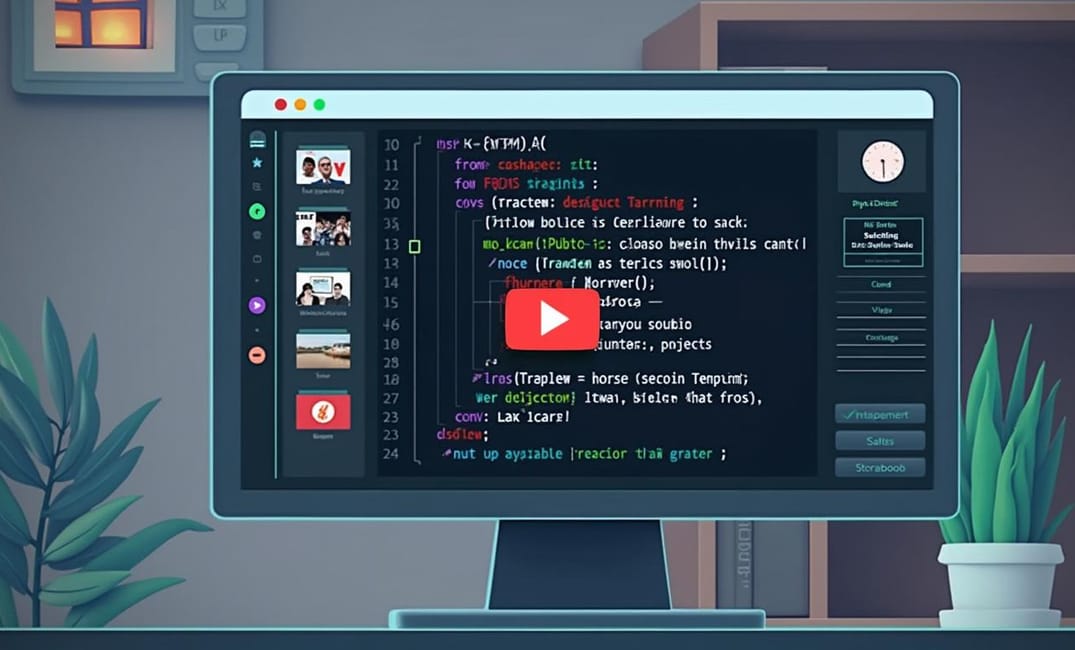Video captioning is crucial for making content accessible and understandable across different languages.
By combining transcription, translation, and the creation of subtitle files (SRT), you can offer a smooth experience for users to consume video content.
In this guide, I'll show you how to create a strong video captioning and translating tool using Python and Streamlit.
We'll go through the process step-by-step, write the code, and understand each implementation part.
The result will be a functional web app where users can upload a video and automatically get captions in multiple languages.
Introduction to Video Captioning and Translating
Adding captions to videos helps make them more accessible for people who are deaf or hard of hearing.
It also helps non-native speakers understand the content better. Translating these captions into multiple languages can make your video content reach a global audience.
We’ll use several powerful libraries:
- Streamlit: For creating the web interface.
- MoviePy: To handle video and audio extraction.
- Faster Whisper: For speech-to-text transcription on the CPU.
- Translate: To handle language translations.
You can get the complete source code at:
Setting Up the Environment
Before you start coding, make sure your environment is properly set up. Here are the steps you need to follow to get everything ready.
Install the Required Libraries
You'll need to install several Python libraries. These include streamlit, moviepy, faster-whisper, and translate. You can install these using pip.
pip install streamlit moviepy faster-whisper translate
With these libraries installed, you can move on to the next steps.
Get "Python's Magic Methods - Beyond __init__ and __str__"
Magic methods are not just syntactic sugar, they're powerful tools that can significantly improve the functionality and performance of your code. With this book, you'll learn how to use these tools correctly and unlock the full potential of Python.
Building the Video Captioning and Translating Tool
In this section, we'll build the video captioning and translating tool step by step. We'll break down the code into segments for better understanding.
Importing the Libraries
First, import the necessary libraries:
import streamlit as st
import datetime
from faster_whisper import WhisperModel
from moviepy.editor import VideoFileClip
from translate import TranslatorThese libraries work together to enable the extraction, transcription, and translation of video content, ultimately generating captions in various languages.
Extracting Audio from Video
To process the video for captioning, we first need to extract the audio. MoviePy is an excellent tool for this.
Here's how you can do it:
# Extract audio from video with MoviePy
def extract_audio(video_path, audio_path):
# Load the video file
video = VideoFileClip(video_path)
# Extract the audio from the video
audio = video.audio
# Save the audio to the output path
audio.write_audiofile(audio_path)
# Close the audio file
audio.close()The extract_audio function performs the following steps:
- Loads a video file from the specified
video_path. - Extracts the audio track from the video.
- Saves the extracted audio to the specified
audio_path. - Closes the audio file to release resources.
Transcribing Audio to Text
The next step involves transcribing the extracted audio to text. For this, we use the Whisper model:
# Set up the Whisper model
model_size = "medium.en"
model = WhisperModel(model_size, device="cpu", compute_type="int8")
# Transcribe an audio file
def transcribe_from_video(audio_path):
segments, _ = model.transcribe(audio_path, )
# Return the segments
return segmentsThis code does the following:
- Sets up the Whisper model with a medium-sized English model, configured to run on the CPU with
int8computation type. - Defines a function
transcribe_from_videothat transcribes an audio file specified byaudio_pathusing the initialized Whisper model. - Returns the list of transcription segments from the audio file.
Function to Format Time for SRT
The SubRip Subtitle (SRT) format uses a specific timestamp format. We need a utility function to convert seconds into this format:
This article is for paid members only
To continue reading this article, upgrade your account to get full access.
Subscribe NowAlready have an account? Sign In

